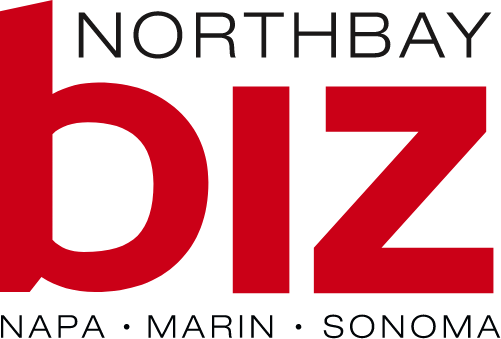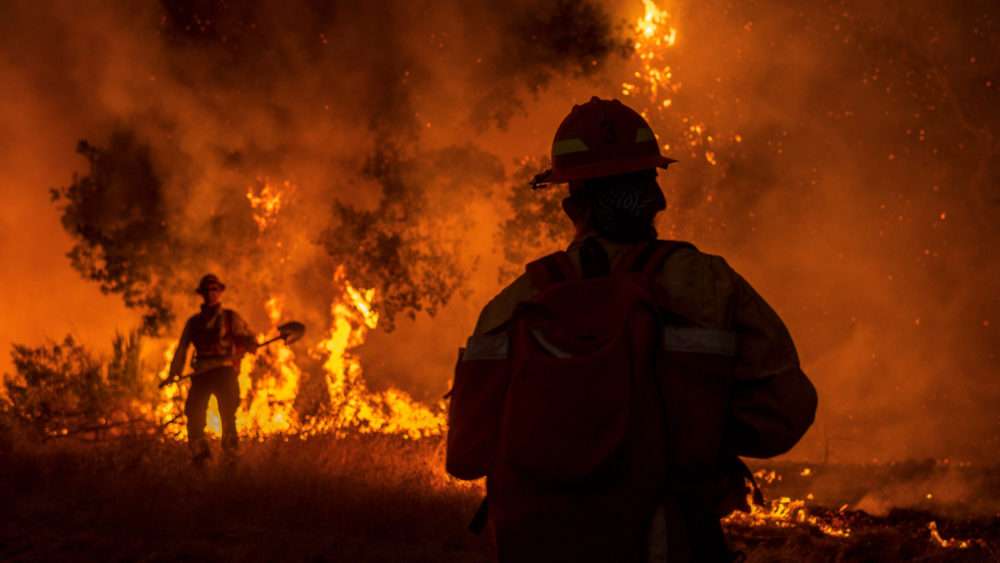Tired of wine, wine, wine? Try some local beer for a change.
Who says you can’t find success in a barrel of beer? According to the Brewer’s Association, theretail dollar value of craft brewing was an estimated $8.7 billion in 2011, up from $7.6 billion in 2010.This growth is in sharp contrast to the overall beer industry, which declined 1 percent in the same period.
“The big brewers underestimated the market,” says Ron Lindenbusch, chief marketing officer at Lagunitas Brewing Company in Petaluma. “They stopped making flavorful beer to become more profitable, but consumers still wanted those beers.”
Increasingly, the beer that people want is made in Sonoma, Marin and Napa counties. North Bay brewing enterprises have cranked up production to meet the double digit rise in demand for their products—and they’re not just selling locally. Many are shipping kegs and bottles to restaurants and retail outlets all over the United States and Asia, Australia and, yes, even Europe.
“In the past, we had to show people the difference between craft brews and other beers,” says Jay R. Brooks, beer columnist and author of the soon-to-be-published California Breweries North. “Now people are turning 21 in a world where they’ve only known craft beer and, as they come of drinking age, they’re starting with local brands.”
The market here includes longtime players that started in the 1980s and 1990s as well as several newcomers, the most successful of which are led by craft brewing experts. These companies are ushering in a new era of growth and opportunity while adhering to important craft brewing values: quality, community and, of course, making (and drinking) great beer.
Growing intelligently
How to manage increased demand is perhaps the biggest challenge facing North Bay brewers. The obvious answer—just make more beer—misses the intricacies involved in expansion: financing and site selection, employee and distributor management and quality control of every additional barrel—equal to 30 gallons—of beer.
Vinnie and Natalie Cilurzo, the husband-and-wife team that owns Russian River Brewing Company, know the challenges of expansion first-hand. In 2004, they opened their brew pub in downtown Santa Rosa, starting at 2,500 barrels per year. They tripled output in 2008 when they opened a nearby production facility, but now both sites are maxed out at a combined 14,000 barrels annually. Though demand continues, the Cilurzos are reluctant to expand again. “Expanding at this point would require us to take on millions of dollars in debt, which we’re not excited about doing,” explains Natalie, the company’s co-owner and president. “It’s easier to make better beer than it is to make more beer.”
Third Street Aleworks, a brewpub established in Santa Rosa in 1995 and opened to the public in 1996, only started bottling its products in 2011 (before that, it had some draught accounts). Co-owner Todd Hedrick says this new venture reminds him of the brewpub’s startup days: fun but not without obstacles. “It’s difficult to balance the needs of in-house customers with the needs of our distributor and the retail stores selling our bottles,” he says. “We want to increase the amount of exposure we have in the market without compromising quality or the ability to serve regulars in-house, so we’re planning a small expansion in the brewery.”
Brendan Moylan has taken a steady approach to growth. He opened Larkspur’s Marin Brewing Company (MBC) in 1989, and then in 1995 built Moylan’s in Novato, where he lives with his family. MBC produces 3,000 barrels per year, sending one-third off-premises; two-thirds of the 4,400 barrels made at Moylan’s gets distributed. With demand growing nationally and internationally—beers from both pubs are shipped as far away as Japan, Italy and Australia—Moylan is working on adding a production facility in Sebastopol.
“A business takes on a life of its own, and you have to do what’s required to keep it rolling,” says Moylan. “Sometimes I can steer the rudder myself, but most of the time, I embrace spontaneity.”
Partnering with stakeholders
Bear Republic Brewing Company was inspired by one family’s desire to start a business that would be fun—and profitable.
“We always talked about running a business together,” says Bear Republic’s CEO and co-owner Richard R. Norgrove, a former executive at Optical Coating Laboratory Inc., in Santa Rosa. “My son, Ricardo, started home brewing in college and saw a future in craft brewing.”
Together with Sandy Norgrove (Richard’s wife and Ricardo’s mom) and Tami Norgrove (Ricardo’s wife), father and son attended brewing trade shows and read up on the industry. Ricardo then apprenticed at Marin Brewing Company for two years before the family opened their brewpub in downtown Healdsburg in 1996.
The pub was an immediate success, and growth has been steady enough to require expansion into an adjacent building—for storage and barreling—as well as into a large production facility in Cloverdale. The operation continues to be a family affair, with Ricardo as brewmaster, Richard overseeing sales and marketing, Tami in charge of accounting and human resources and Sandy responsible for office management.
“This year, we’ll produce about 60,000 barrels,” says Dan Hanes, brand ambassador. “We make 90 percent of our beer at our Cloverdale facility, which we’re currently expanding so we can top the 100,000 barrel mark.”
One factor in Bear Republic’s success (in addition to award-winning beers) is the company’s approach to distribution. “We often start with smaller distributors and grow with them,” explains Hanes. “They understand this is an artisan product and they do a great job with it.”
Lagunitas Brewing Company has undergone several major expansions since founder Tony Magee started selling beer out of his truck in 1995. The first move, from a small site in Lagunitas to commercial space in Petaluma in 1995, was spurred by West Marin’s water and sewer limitations. In 1999, the company moved to a multi-acre site on North McDowell that’s given it room to grow.
“We have a great landlord who’s let us expand our footprint,” says Lindenbusch. “The city of Petaluma has also been very supportive of our growth.”
Lindenbusch expects to produce about 240,000 barrels of beer in Petaluma this year. Still, demand for Lagunitas beer nationally has the company planning a second facility in Chicago. “It costs so much to ship beer past the Rockies, it made sense to open a satellite brewery in the Midwest,” he says. “We’re taking the diesel out of beer.”
Embracing community involvement
North Bay breweries see themselves as an integral part of the communities in which they’re located. “We strive to offer a clean, well-lit place where everyone can meet and feel comfortable,” says Third Street’s Hedrick. “It’s amazing to be such a big fixture in the community.”
The craft brewing industry emphasizes philanthropy, and North Bay brewers don’t disappoint. They host numerous fundraisers during the year, donate tours and special events for nonprofit auctions and give away barrels and barrels of beer.
“We love to watch our beer turn into money for a good cause,” says Lindenbusch of Lagunitas, which in 2011 donated to nearly 1,000 nonprofit events locally and nationally. Lagunitas also is a a main sponsor at the Petaluma Music Festival (its outrageous Beer Circus in support of the Festival includes other breweries, entertainment and lots of food and fun) and hosts music-based fundraisers (with headliners such as Emmylou Harris) at the brewery.
Other examples of the “give-back” ethos: Russian River Brewing Company’s fund-raising efforts for Sutter Breast Care Center of Santa Rosa, which netted $65,000 in 2011 alone; and Fairfax’s Iron Springs Pub and Brewery’s’ “Give Back Tuesday” events, which have generated nearly $100,000 for local nonprofits since 2007.
North Bay breweries have also been known to strengthen the bond between locals and tourists, and promote responsible alcohol consumption. But perhaps the biggest impact on the community comes in the form of decently paid jobs in companies that value employees.
“We pay our employees more than a living wage so they can live locally and really invest in the community,” says Colin Kaminski, head brewer at Downtown Joe’s in Napa. “We care about our employees, and they care about us.”
Specializing within the niche
Modern craft brewing started as a response to bland, conventional beers. The first few decades of the industry centered on getting flavor back into beer and getting that beer into the hands of consumers. The next trend, according to beer expert Brooks, is diversification among craft brewers.
“The industry is dividing into different niche markets,” he says. “More brewers are specializing in a particular range of styles to separate themselves from the pack.”
Vinnie Cilurzo, head brewer and co-owner at Russian River Brewing Company, has been pushing brewing boundaries for decades. In the 1990s, while at Blind Pig Brewing Company in Southern California, he created the first Double IPA, an intensely hopped version of the classic India Pale Ale. To the delight of loyal Russian River Brewing Company customers, he continues to experiment, brewing aggressively hopped California-style ales, twice-fermented Belgian-inspired ales and barrel-aged beers that incorporate wild yeasts and feature sour flavors. Other breweries resist being tied down to one or two styles. “We’ve brewed 90 different beers over the last 16 years,” says Hanes of Bear Republic. “We like a lot of variety. The trends influence us because we want to take a crack at what others have come up with. But mostly, we brew what we like.”
Riding the wave of new ingredients
North Bay brewers can continue innovating, thanks in part to the new ingredients showing up in the marketplace. Moylan, for one, has watched this trend unfold with fascination.
“When I started in this business nearly 20 years ago, there were a finite number of ingredients,” he says. “I had my list, and I could keep it all in one space. Now there’s more stuff all the time.”
That “stuff” could be ingredients not typically added to beer, like pomegranate, fresh ginger, one of the many experimental varieties of hops being cultivated by farmers in Yakima, Wash., or malt barley sourced from new growing regions half a world away.
Terroir, processing techniques and even local bee colonies can all affect the flavor of these ingredients. Denise Jones, Moylan’s brewmaster, remembers the minty notes she tasted in hops grown next to a mint field and the Cascade hops in Australia that tasted nothing like the Cascade hops grown in Yakima. Commercial brewers must take those flavor variances into consideration and make adjustments to ensure a particular beer tastes the same from batch to batch.
“We’re always on shifting sands with our ingredients, but we have to remain consistent,” says Jones. “Mother Nature does her thing, and it’s up to us to dictate whether we need more or less to keep our product consistent.”
Straight from the source
An increasingly popular way to source ingredients is to forge partnerships with farmers and buy directly from them. Lagunitas recently adopted this model with hops and barley purchases, and it’s created significant positive change in the company’s business processes.
“We call it de-commoditizing our supply source,” says Lindenbusch. “By working with farmers directly, we can guarantee them a decent price for their crop and offer a true farm-to-table product. Now we can say, ‘We know the farmers, here’s what they grew, and here’s what we made out of it.’”
Natalie Cilurzo echoes that sentiment. “Just as winemakers hand-select their grapes, craft brewers hand-select their hops,” she says. “Establishing great relationships with our hop growers has been a lot of fun for us as well as for the growers.”
How green is your beer?
Another trait that characterizes craft brewers in the North Bay is the desire to reduce their overall impact on the environment. “Most craft brewers are aware of their environmental footprint and seek ways to be ecological and efficient,” says Brooks. “They’re quite good with recycling, capturing energy and reusing it, water conservation and ways to create the product sustainably.”
North Bay breweries have found an easy way to dispose of the hops, barley, rye and other grains used in the brewing process: They donate it to local farmers, who feed the protein-rich, broken down mash to livestock. Silverado Brewing Company in St. Helena also uses the spent grains in the pizza crust it serves in its restaurant.
Water issues are more difficult challenges to solve. Breweries need water for sanitation and cleaning, for heating and fermenting and, of course, for the final product—which is 94 percent water. They also need to properly dispose of their waste stream, which contains organic compounds at higher concentrations than what you’d get out of a house.
“The smaller batch size systems use about six gallons of water to make a gallon of beer, but with the right level of sophistication, you can get that ratio down to three-to-one.” says Don Barkley, a craft brewing pioneer who’s master brewer at Napa Smith, the only production facility in Napa County. “Breweries large and small require wastewater treatment, and the extent of which depends on local municipal capacity and regulations. Once a brewery hits 5,000 barrels per year, it needs a more advanced system for dealing with its waste stream.”
Silverado Brewing Company produces less than 1,000 barrels per year. Nonetheless, this certified green business takes its eco-responsibility seriously, sourcing organic ingredients for its Blonde Ale and reusing wastewater for heating and other steps that don’t require potable water.
Iron Springs Pub and Brewery, another certified green business, captures potable water sent through the heat exchanger, and uses it for the next day’s brew. “We reduce, reuse and recycle every bit of byproduct in both the restaurant and the brewery,” says proprietor Michael Altman. “We make a conscious effort to reduce what we put down the drain to minimize the effect on the municipality and on the environment.”
A dream job
Despite the business challenges, those in the North Bay brewing industry love what they do. Most started as home brewers and took the road less traveled to brew beer professionally.
Don Barkley, for example, made his first batch of homebrew in 1971 at age 18. Seeing a future in specialty beer, he enrolled in the fermentation science program at UC Davis in 1977, just as New Albion Brewery, the first craft microbrewery to open in the United States after prohibition, was ramping up production in the town of Sonoma.
“Every summer from 1978 through 1980, then full-time until it closed, I’d go to New Albion and make beer,” recalls Barkley. “I had a tent in the hills and got paid a case of beer per week and all I could drink on the job.”
Unable to find capital for expansion, New Albion Brewery slid under the waters in 1983. But Barkley survived, using his skills and New Albion’s equipment to help open the first brewpub in America, the Mendocino Brewing Company (which started in Hopland in 1983 but is now located in Ukiah). He spent 25 years there, crafting now-legendary brands like Red Tail Ale, before returning to his family ranch in Napa and taking his current position at Napa Smith.
Colin Kaminski had an eclectic assortment of careers, including one designing brewing equipment, before he had a chance to brew professionally. “I’d been a regular at Downtown Joe’s for several years when the head brewer quit in 2003,” Kaminski remembers. “The owner told me I was the only one besides the brewer who knew how to work the equipment and offered me a job.”
The brewing tradition, the camaraderie among brewers and the chance to be creative appeal to many. “I’ve been so lucky to be able to turn my hobby into a career,” says Ken Mee, co-owner and head brewer at Silverado Brewing Company. “It’s a dream come true.”
The best way to understand what drives North Bay brewers is to follow this advice from Dan Hanes: “Go to the breweries and taste the beer. You’ll get a feel for the brewers’ personalities and the passion behind what they’re doing.” And you’ll learn why beer drinkers all over the world are clamoring for our North Bay brews.
Know Your Breweries
The North Bay supports three of the brewery types defined by the Brewers’ Association.
• Brew pubs combine a restaurant and a brewery in the same building and sell most of their beer onsite.
• Microbreweries make less than 15,000 barrels a year and sell 75 percent or more of it offsite.
• Regional craft breweries produce 15,000 to six million barrels a year—50 percent of which must meet flavor criteria set by the Association—within an independent ownership structure.



